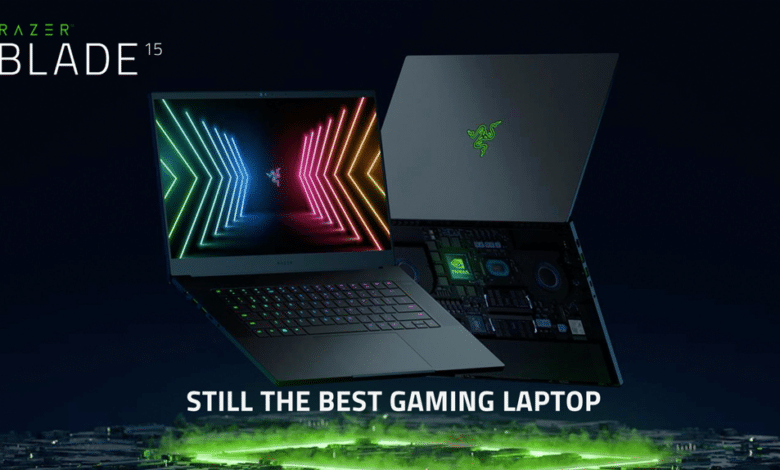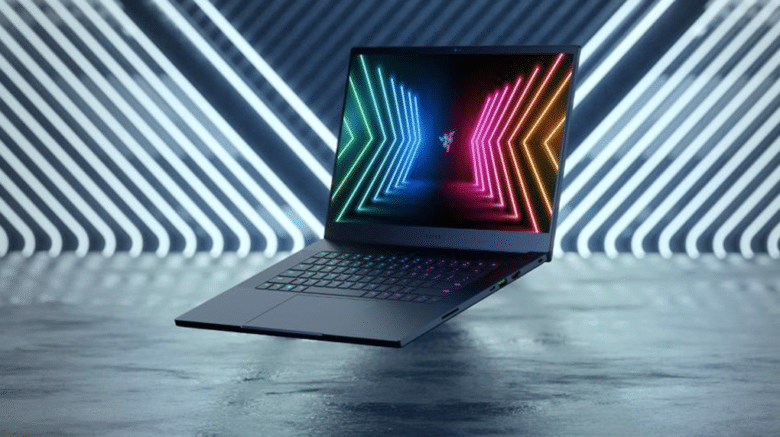
Razer introduced the latest generation of its popular Blade notebooks at this year’s CES. Two new gaming notebooks with the classic name Blade and a model with a larger display called Blade-Pro were included.
Blade 15 Base Model: Who has the choice…
Initially, the new Blade 15 is to come in two different versions. Namely, these are the “Base Model” and the “Advanced Model”. The cases are made of high-quality aluminum in both cases. Apart from the 15.6-inch display, the customer has the first choice. Once again, you have to choose between three different variants within the base model. Razer installs an IPS display with a resolution of 1920 x 1080 pixels (Full HD) and a refresh rate of 120 Hz in the cheapest version of the base model. If the refresh rate is too low, you can also opt for a model with 144 Hz. As a third option, you can choose a resolution of 2,560 x 1,440 pixels for the base model. The high resolution is then crowned by 165 Hz and a response time of 2.5 ms.
The buyer also has the freedom to choose the graphics card. You can at least choose an Nvidia GeForce GTX 1660 Ti for the base model. Alternatively, Razer offers a GeForce RTX graphics card. The minimum storage capacity is 512 GB, which comes in the form of a PCIe-SSD. The notebook offers another M.2 slot to provide more storage space. The core of the Blade 15 base model is an Intel Core i7 processor of the 10th generation. It comes with six cores and a maximum clock rate of 5 GHz. It is supported by at least 16 GB of RAM, which can easily be expanded to 32 GB.
Blade 15 Advanced and Blade Pro: Razer takes it up a notch
Are the specs of the base model too weak for you? Then you should take a look at Razer’s other two new launches. First and foremost, the Blade 15 Advanced already bears a clear advancement in its name. The GTX Ti 1660 is not even available here. Instead, Razer only uses the GeForce GTX graphics from Nvidia. The storage capacity is also already 1 terabyte in the lowest features. A PCIe-SSD is also used here, which can also be expanded by another empty M.2 slot. Razer installs an Intel Core i7-10875 processor with eight cores and a maximum clock rate of 5.1 GHz at the heart of the gaming notebook. The working memory does not change compared to the base model. The processor is joined by 16 GB, which can easily be expanded to 32 GB.
However, you can really let off steam with the Blade 15 Advanced when it comes to choosing the right display. If you like it buttery smooth, you should go for the display with a resolution of 1920 x 1080 pixels (Full HD), 360 Hz and 2 ms response time. If the resolution is more important, you can go for the display with 3840×2160 pixels (QHD), 240 Hz and 2.5 ms response time. However, Razer does not only offer IPS technology. Those who like high-contrast can also opt for an OLED panel with 3840×2160 pixels (QHD), integrated touch and 1 ms response time.
In addition to the two 15-inch gaming notebooks, Razer has also introduced a matching notebook for friends of larger displays. The Razer Blade Pro already has its unique selling point in its name. The manufacturer wants to launch a 17-inch gaming notebook that delivers uncompromising technology. In terms of features, you can choose between the same options as in the Blade 15 Advanced.
Prices and availability
On January 26, it should already be so far. That’s when the two new gaming notebooks Razer Blade 15 Base Model and Advanced Model are supposed to be launched. The prices start at 1,899 Euros. Those who are interested in the Blade Pro can only pre-order it for now. We do not yet know when it will exactly reach the retail market. The price list for the 17-inch gaming notebook is supposed to start at 2,599 Euros.





